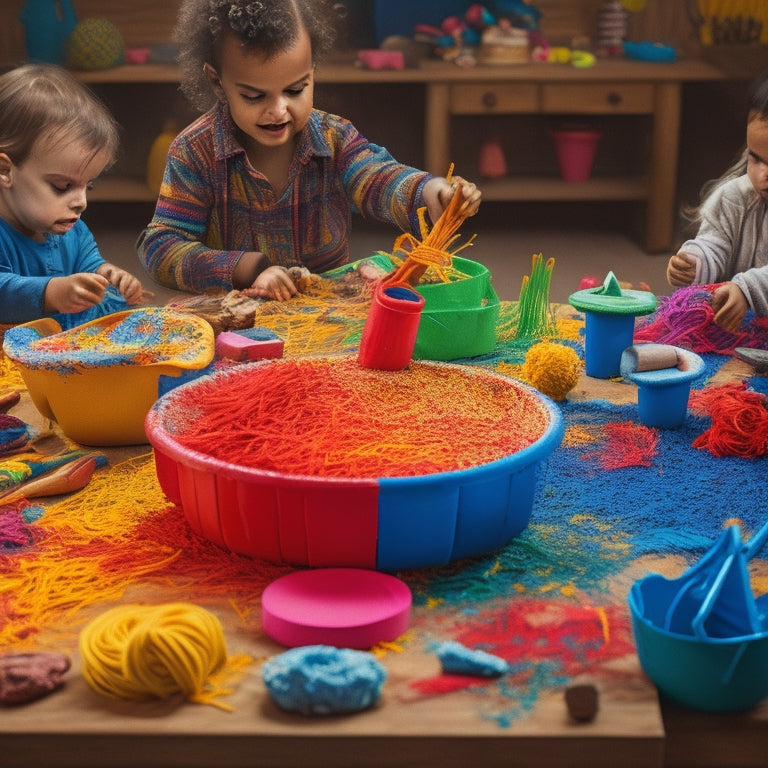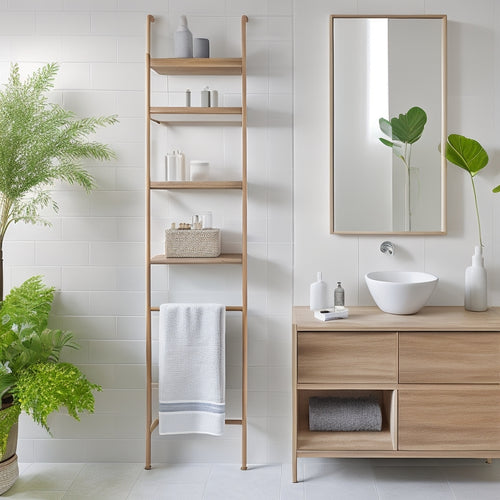
Unleash Creativity With Noodle Sensory Play
Share
Noodle sensory play is a powerful catalyst for unleashing creative potential in children, offering a unique opportunity to engage their senses, spark imagination, and foster innovative thinking. By incorporating a variety of textures, sensory-friendly tools, and visually appealing spaces, you can create an environment that inspires creativity and exploration. As children engage in noodle play, they develop essential skills like fine motor control, problem-solving, and independent thinking. By embracing the mess and mayhem, you can open up a world of creative possibilities, and discover the endless benefits of noodle sensory play, where the boundaries of imagination are waiting to be pushed.
Key Takeaways
• Set up a visually appealing space with varied textures, sensory-friendly tools, and divided noodle containers to spark creativity.
• Add neon food coloring to noodles for a colorful and engaging sensory experience that fosters imagination.
• Incorporate unique textures and materials, such as rice, beans, or sand, to stimulate senses and encourage exploration.
• Encourage problem-solving and independent thinking by providing open-ended play opportunities with noodles and other materials.
• Prepare for mess-free options and be flexible to adapt to children's creativity, maximizing potential with careful planning.
Noodle Sensory Play Essentials
To ignite an immersive and engaging noodle sensory play experience, you'll need a few essential supplies, including a 41-quart storage bin, a funnel set, a metal scooper, neon food coloring, noodles, and a white noodle container. These supplies will provide a solid foundation for a fun and interactive experience.
The funnel set can be used for funnel play, encouraging problem-solving and fine motor skills, while the metal scooper benefits include developing grasping and transporting abilities. For a colorful twist, try noodle color experiments with neon food coloring.
If you're looking for sensory bin alternatives, consider using a smaller container or adapting the experience for different ages and abilities. With these essentials, you're ready to spark creativity and imagination in your noodle sensory play experience.
Setting the Scene for Fun
Dividing noodles into different containers and adding a splash of neon food coloring sets the stage for a vibrant and engaging sensory play experience. This colorful setup invites children to explore, create, and learn through sensory exploration and creative play.
To create an immersive environment, consider the following:
-
Add a variety of textures: Incorporate different shapes, sizes, and colors of noodles to stimulate tactile exploration.
-
Incorporate sensory-friendly tools: Provide funnels, scoopers, and other materials that encourage creative play and problem-solving.
-
Create a visually appealing space: Arrange the containers in a way that sparks curiosity and invites children to immerse themselves and explore.
Noodle Play Benefits Uncovered
As children immerse themselves in the vibrant noodles, they embark on a journey of discovery, uncovering a multitude of benefits that extend far beyond the world of creative play. Noodle sensory play fosters sensory development, honing cognitive skills as children explore and engage with the colorful, tactile environment.
Through messy play, children experience sensory benefits, refining their fine motor skills and hand-eye coordination as they scoop, pour, and manipulate the noodles. This open-ended play also encourages problem-solving, independent thinking, and creativity, laying the foundation for a lifelong love of learning.
Tips for Noodle Play Success
Careful planning and consideration are essential to maximizing the full potential of noodle sensory play, ensuring a fun and engaging experience for children while minimizing mess and stress.
To achieve success, consider the following tips:
-
Opt for mess-free options: Use alternative materials, such as pre-colored pasta or mess-free coloring tools, to reduce the risk of stains and mess.
-
Prepare for colorful experiments: Have a plan in place for unexpected sensory surprises, like a sudden burst of color or an unexpected texture.
-
Be flexible and adapt: Be prepared to adjust your approach as needed, and don't be afraid to try new things and explore different materials and ideas.
Exploring Beyond Noodles
While noodle sensory play offers a wealth of creative possibilities, there are numerous other materials and activities that can be used to stimulate children's senses and foster a deeper understanding of the world around them.
Explore sensory bin alternatives, such as rice, beans, or sand, to create innovative sensory experiences that go beyond noodles.
For creative play, think outside the box and incorporate unique textures, like pompoms or fabric scraps, to create engaging and interactive experiences.
Frequently Asked Questions
How Long Does It Take to Set up Noodle Sensory Play?
Determining setup timeframes for noodle sensory play is essential. Fortunately, quick prep is possible, taking around 30 minutes to an hour, including dividing, coloring, and baking the noodles, making it an accessible activity for busy schedules.
Can I Use Cooked Noodles for Sensory Play?
When contemplating cooked noodles for sensory play, it is crucial to note that they may become mushy, limiting texture variations. Additionally, flavor exploration might be compromised, as cooked noodles can absorb flavors, altering the sensory experience.
Are There Other Materials That Can Be Added to Noodles?
When creating a sensory experience, consider adding varied textures like Textured Beads or sparkly Glitter Accents to noodles, enhancing tactile exploration and visual stimulation, and fostering imaginative play and creative discovery.
Can Noodle Sensory Play Be Adapted for Older Children?
When adapting noodle sensory play for older children, incorporate older themes and complex textures to stimulate their curiosity, encouraging exploration and creativity through nuanced sensory experiences that cater to their developing interests and abilities.
How Often Should Noodle Sensory Play Be Rotated or Changed?
To maintain engagement, rotate or change noodle sensory play every 4-6 weeks with theme refreshes or seasonal updates, ensuring novelty and excitement while promoting continued exploration and creativity.
Related Posts
-

Vintage-Style Freestanding Bathroom Cabinets for Classic Look
When you choose vintage-style freestanding bathroom cabinets, you're adding timeless charm to your space while maximi...
-

Modern Open-Shelf Bathroom Cabinet Designs
Modern open-shelf bathroom cabinet designs effortlessly combine style and functionality, creating an inviting space. ...
-

Innovative Tool Empowers Writing With Digital Mapping
Digital mind mapping tools have revolutionized the writing process by providing a powerful platform for conceptual or...


